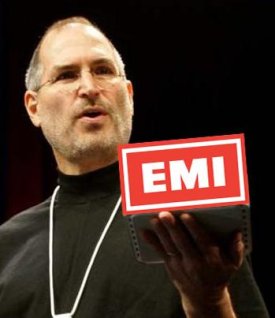This family portrait explains a lot.

April 2007
Sat 28 Apr 2007
Thu 19 Apr 2007
A recent paper in Science [Science 13 April 2007: Vol. 316. no. 5822, pp. 277 – 280] reports that fossil proteins have been found in a leg bone of a Tyrannosaurus rex. In fact, intact collagen proteins have been found in this 68 million-year old specimen. Most fossils of this age contain no soft tissue, since soft tissue would have long ago been replaced by minerals during the fossilization process. Further testing of the fossil protein reveals it is very similar to that found modern-day chickens. This is further evidence favoring the theory that birds are actually living descendants of dinosaurs. Interesting!
A readable account is at The Economist website.
Wed 18 Apr 2007


On Saturday I attended a discussion by Walter Isaacson for his new biography, “Einstein: His Life and Universe”. Very interesting discussion; I’m quite eager to read the biography. I recorded the lecture for those interested in hearing it. I did read the author’s previous biography on Benjamin Franklin, and enjoyed it.
In addition, last night I went to a signing by Arthur Phillips, for his new book: “Angelica“.
This is the second time I’ve attended a reading by this author (a couple of years ago I went to his “The Egyptologist” reading).
I really enjoyed Arthur Phillip’s reading/talk (which I also recorded). I didn’t expect the boys to be interested (I took them to Comet Ping Pong prior as a sort of “pre-reward”), but both asked pointed questions about ghost stories and why the author liked/disliked them.
Angelica is written in 4 parts, with 4 different points of view. One of the parts involves ghosts and/or the supernatural. The book has received good reviews, but I need to find time to read The Egyptologist first. My stack of “to be read” books seems to increase by 2-3 each time I read one. Oh well – one can never have too many books; and I’ll never run out of new material to transport me out of a mundane world. :)
Fri 13 Apr 2007

NASA scientists can now predict the color of plants on other planets, and they may well not be green. On Earth photosynthetic plants are primarily green, due to the color of chlorophyll. Chlorophyll in plants is responsible for photosynthesis, which converts the (light) energy of the sun into (chemical) energy of sugars such as glucose. Chlorophyll appears green because it absorbs more red and blue light and less green light (i.e., it reflects more green). Since more red light actually reaches the surface of the earth than green, Nature has optimized chlorophyll to use the most abundant (red) light. However, other planets, circling other stars, may have a different wavelength of light predominant on the surface. Thus, the “chlorophyll” on other planets may have evolved to absorb this light and reflect something other than green.
Mon 2 Apr 2007
High quality, unprotected music available on iTunes
Posted by boz under Computing , MusicComments Off on High quality, unprotected music available on iTunes
 Apple has inked an agreement with EMI that will let them sell high quality versions of songs without copy protection. EMI will be releasing their catalog DRM (Digital Rights Management)-free. Yep, that means that finally you can download a song in iTunes, and use it on as many computers or devices as you want, or convert to other formats with no restrictions.
Apple has inked an agreement with EMI that will let them sell high quality versions of songs without copy protection. EMI will be releasing their catalog DRM (Digital Rights Management)-free. Yep, that means that finally you can download a song in iTunes, and use it on as many computers or devices as you want, or convert to other formats with no restrictions.
The DRM restrictions have been the main reasons that I have only purchased about 5 songs on iTunes – such songs only work on 3 computers and your iPod. My music at home is stored on a Linux box and served up to my stereo via Tivo. I buy CD’s and convert the music to mp3’s myself. The other reason I have purchased few songs via iTunes was the low quality of purchased iTunes (or other online) songs vs. those I can create myself from CD’s.
With this new development, I can now purchase individual songs, in high quality (256-bit AAC vs. the lower quality 128-bit AAC offered to date), with no DRM. Yes, I’ll have to convert them again to mp3 to listen via Tivo, but that’s a more viable option now with a higher-quality original. Now I can get high-quality *individual* songs – to date I’ve had to purchase an entire CD even if I wanted a high-quality version of only a single track.
Each song will cost $0.30 more in the DRM-free/high quality version ($1.29 vs. $0.99). What is also a real cool deal is that you can upgrade your currently purchased music to the high quality version for the $0.30 difference – so you can maintain your investment in iTunes.
Apple will also continue to offer the lower-quality, DRM (protected) versions of songs for $0.99, so those that don’t care about anything but price won’t be charged more. This also means that Apple’s competitors won’t have a price advantage.
This is due to happen in May, 2007.





